Our Blog
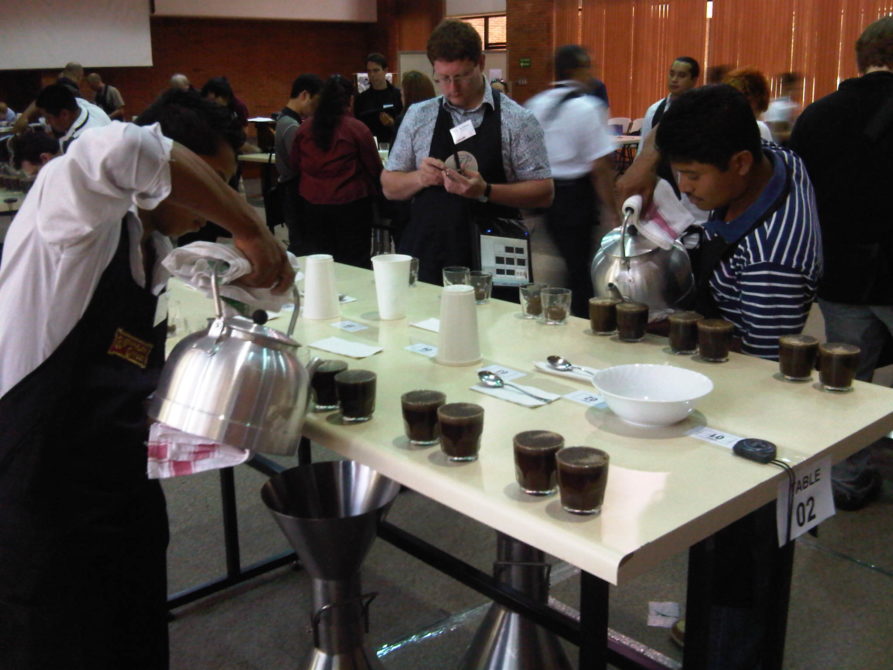
Judging Guatemala Cup of Excellence 2011 – by Ted Vautrinot, Kean Coffee roaster
There is a special magic wafting through a room filled with passionate coffee professionals intent on finding the absolute best coffee from Guatemala’s crop this year. Every sniff, every slurp is carefully evaluated and scored- descriptions of honey, cherry, chocolate, caramel fill the margins as each coffee gets a meticulous assessment before moving on to the next possibility.
I was fortunate to return to Central America to be a judge for Cup of Excellence Guatemala. Our 22 member international panel hailed from Japan, Germany, England, Australia, Russia, Korea, Canada, Morocco, Norway, and the U.S. Our purpose was to identify the best examples of Guatemala coffee that year so we could buy it and bring it home to our customers, and also to recognize and reward the efforts of the producers who developed a truly stellar coffee. The top 20 coffees chosen from the over 300 entries are sold at auction. The winners get the best price for their crop, as well as respect and admiration from their peers. The biggest winner, however, is the coffee consumer, because the methods and care the producers employ to produce a competition quality coffee raise the quality of all the different lots coffee on their finca (farm) and translate to a better cup in our coffeehouse at home.
The judging is exhaustive. By the time we get to the final top ten round at the end of five days we’ve cupped each of the coffees four separate times and huddled up in the conference room after each round to compare (and defend) our scores. Judging Guatemala coffee is particularly challenging because each of the eight producing regions- Antigua, Huehuetenengo, Coban, New Oriente, Atitlan, Fraijanes, San Marcos, and Acatenengo has a unique and delicious flavor profile. Because of Martin’s history and relationships in Guatemala coffee we’ve had many examples of different regional coffees from Guatemala in the coffee house, as many as five at one time.
We also took time to visit the producers and fincas, and see some of the sights. In the old city of Antigua beautifully restored churches seem to be on every corner. The cobblestone streets of this former capitol of all of Central America weave through a town with absolutely no billboards, neon, or any of the trappings of our everyday life. I felt transported back in time strolling through the charming central plaza.
Visiting the Zalaya Family Fincas in Antigua was especially moving for me. The Zalayas have been producing coffee for generations, and we’ve had many of their coffees at Kean since we opened. We toured through finca Santa Clara and viewed the Bourboncillo (dwarf Bourbon) plants as well as the wet and dry mill facilities. I am always struck by the amount of passion, care, and hard work that go into each individual 132lb bag of green coffee.
We also travelled east to visit the Keller’s finca Santa Isabel. Like Martin’s family, the Kellers began producing Guatemala coffee four gene
rations ago after emigrating from Germany. They operate an organic farm, creating their own compost and natural fertilizers and keep their rows of coffee within the natural rainforest that grows around it. They’ve also set aside a large nature preserve adjacent to their finca to retain the habitat for the indigenous flora and fauna of the area .Although we are familiar with the concept of parkland, the Guatemalan government is not. The Keller family paid for and set aside this land because they feel it’s the right thing to do, just as they’re committed to organic practices. We’re currently using two of their coffees in our line-up, as a decaf, and in our espresso.
Before heading home I took a side trip to Martin’s childhood home of Panajachel on the shore of Lake Atitlan. The charming village and breathtaking view of the lake with the two volcanos on the distant shore were worth the twisting, jolting, careening 5 hour bus ride from Guatemala City. My hosts the Jones (Jones Coffee Co, Pasadena) family showed me around the town and gave me a tour of Pana Kids, a multi-lingual school they support in the village. The school teaches Spanish, German, English, and the Mayan language to the children, most of them of Mayan descent. The Mayan language is becoming lost as Spanish and English become the lingua franca in the area, and the school’s aim is to preserve the Mayan culture and heritage while giving the students the tools to be integrated in the modern Guatemalan world. As I showed my photos to Martin and Stephen they recognized a few of the sights from their childhood- the churchyard where they played soccer, the marketplace, and the shambled docks on the lakefront.
On my journey home, my bags brimming with samples of green coffee to cup with Martin, I was again struck by the connection we have to the people a half a world away that nurture a seed from the earth that eventually becomes the cup of coffee that creates the community we enjoy at Kean. All the toil, the planning, the relationships we develop serve the village we’ve created in the heart of Orange County, and most importantly- in our hearts.
Happy cupping!
Ted Vautrinot
Head Roaster, Kean Coffee




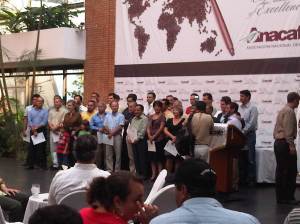


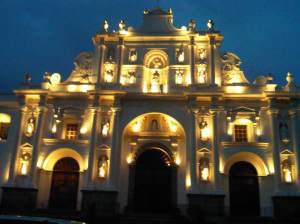

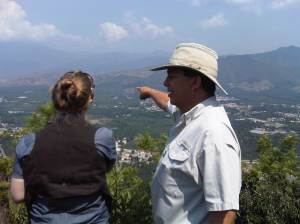


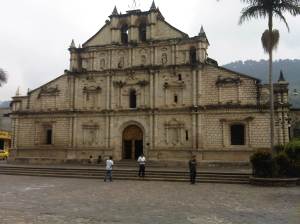

Comments
Hi there, I enjoy reading all of your article post. I like to write a little comment to support
you.
Hmm is anyone else having problems with the images on this blog loading?
I’m trying to determine if its a problem on my end or if it’s
the blog. Any feedback would be greatly appreciated.
The images are loading fine for us Johnny. Sorry you’re having trouble!